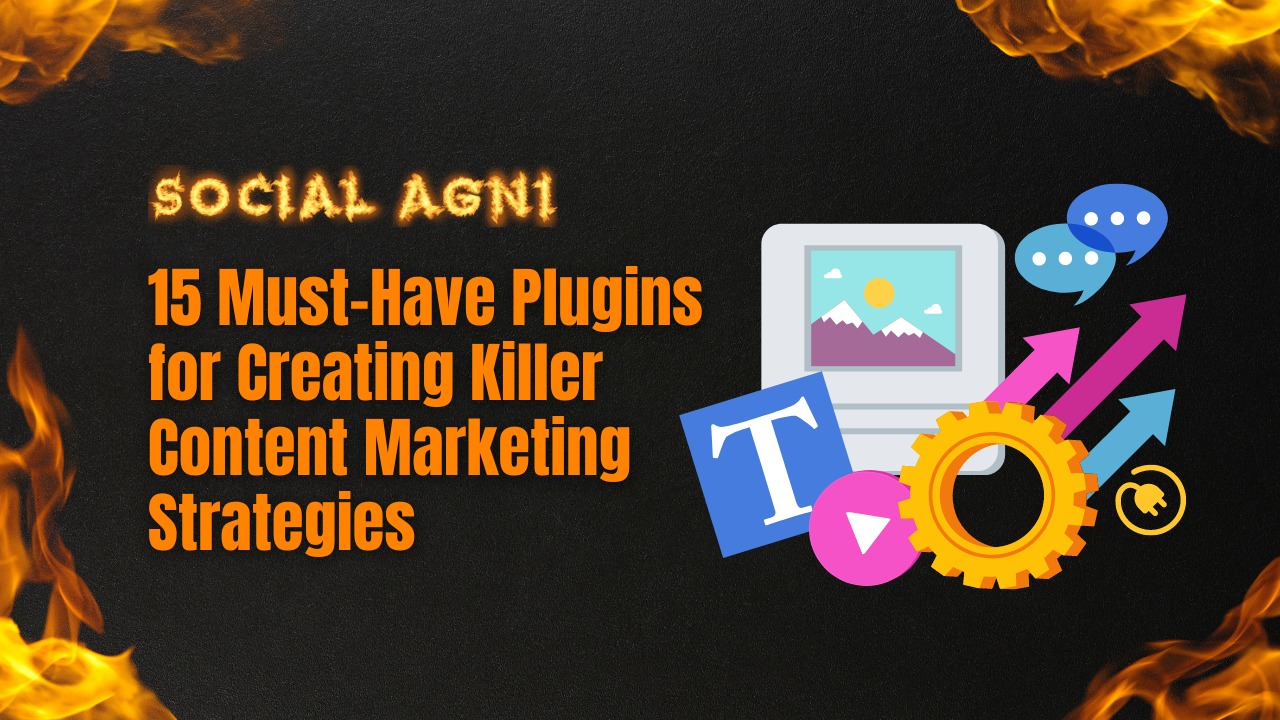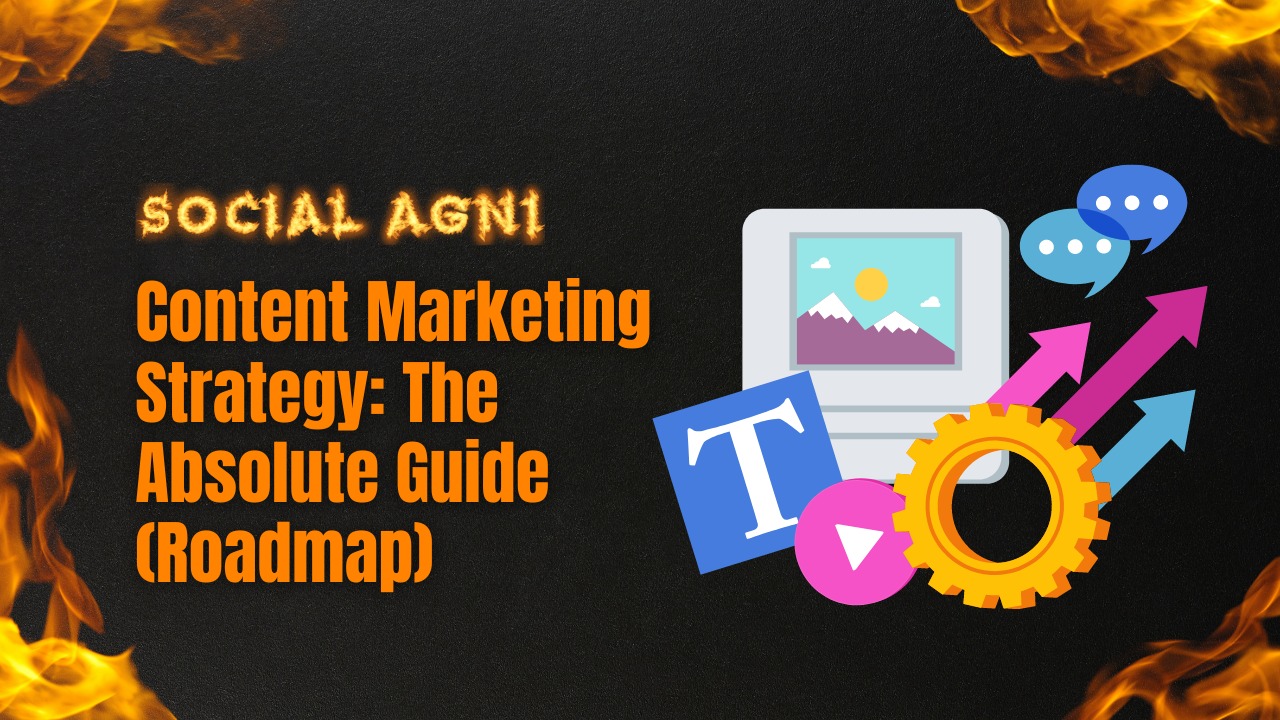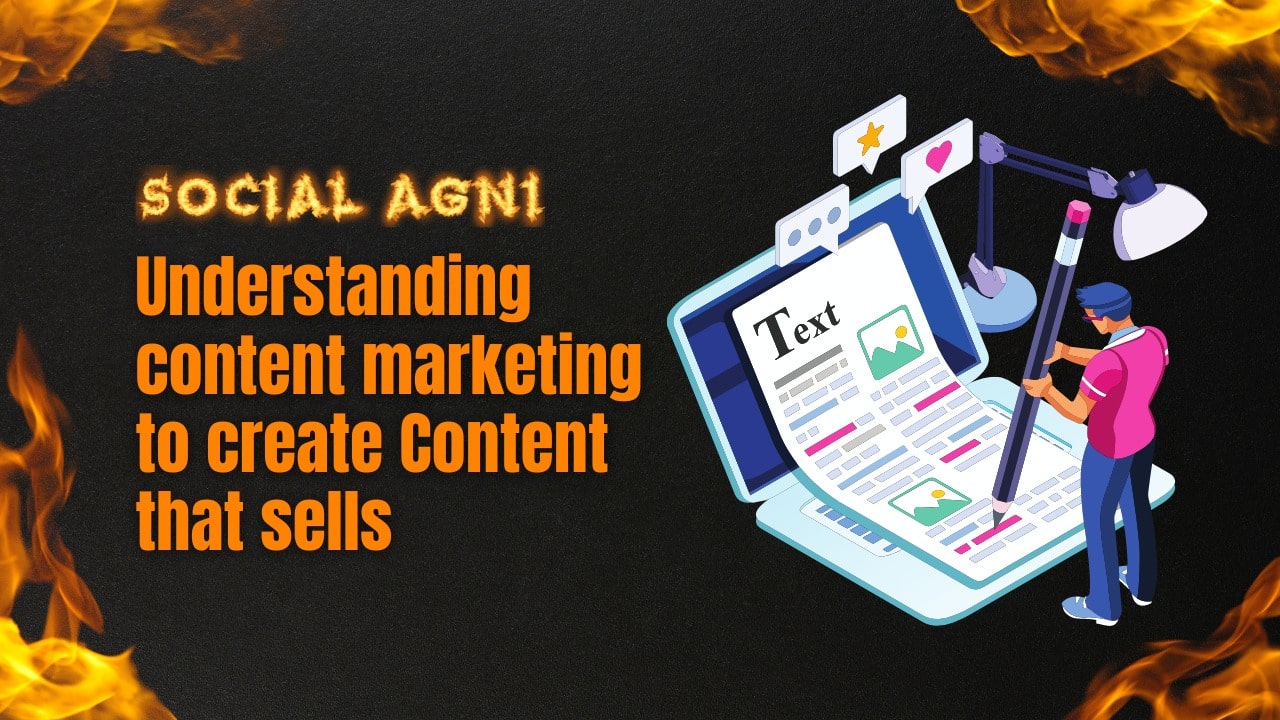Content production and curation are crucial to effective marketing tactics in the ever-changing digital world. High-quality, engaging content attracts and retains audiences, builds brand visibility, and drives conversions for businesses and people. Without the correct tools, content production and curation may be time-consuming, difficult, and overwhelming. Fortunately, technology has made content generation and curation easier and more efficient. Content creation entails creating unique, useful, and relevant content for a specific audience. It includes articles, blogs, videos, infographics, and more. material curation entails locating, organizing, and distributing reliable material related to a theme or issue. Marketers may build credibility as industry experts by curating information for their consumers. Content developers and curators struggle to generate new ideas. It’s hard to remain ahead of the competition and create audience-friendly content. The quality of the material also attracts and keeps readers and viewers. Grammar, spelling, and aesthetics can lower text credibility and impact. Many content generation and curation solutions exist to solve these issues. These technologies help marketers, entrepreneurs, and content producers generate, curate, and share great content. These tools cover all aspects of content creation and curation, from idea generation to writing and editing to visual content creation and video editing. These technologies help content authors and curators save time and improve content quality and consistency. These technologies help marketers build thought leadership, engage consumers, and stand out in the digital space. This article discusses the best content generation and curation tools. These technologies will be examined for idea development, content finding, and organization. These tools will make content production and curation easier and more rewarding for both new and experienced content creators. Let’s explore content strategy-changing tools. Understanding Content Creation and Curation Digital marketing techniques require content production and curation. Understanding their distinctions helps maximize their potential. Content Creation Content production entails creating unique, quality material for a specific audience. It includes articles, blogs, social media updates, videos, infographics, podcasts, and more. Content production informs, entertains, educates, and inspires. Researching the target audience’s preferences, pain areas, and interests is essential when developing content. This research helps content providers create engaging, valuable material. information makers should also provide well-written, graphically appealing, and readily consumable information. Grammar, readability, narrative, and visuals/multimedia are important. Content Curation Content Curation, on the other hand, entails finding, collecting, and organizing material from multiple sources to deliver to an audience. information curators review online information to find the most relevant, useful, and informative things for their audience. Curating material for an audience’s interests, requirements, or industry adds value. Trusted curators weed out irrelevant or low-quality information, saving the audience time. Content curation can include blog postings, newsletters, social media posts, and Flipboard or Scoop. Top Content Creation Tools Content production tools may boost productivity, creativity, and quality. Top content creation tools Content Idea Generation Tools BuzzSumo Analyses social media engagements and search data to find trending content. Google Trends Tracks term popularity and search volume. AnswerThePublic Creates a visual map of popular inquiries about a term, revealing what your target audience is searching for. Writing Tools Grammarly Checks grammar, spelling, and readability. Hemingway Editor Highlights difficult sentences, passive voice, and adverbs to improve writing. ProWritingAid Analyses grammar, style, readability, and plagiarism. Visual Content Creation Tools Canva A user-friendly interface with a large library of templates, stock pictures, and graphic components for generating great graphics. Adobe Creative Cloud Professional-grade design tools, including Photoshop, Illustrator, and InDesign. Piktochart Creates attractive infographics and presentations using customizable templates and data visualization tools. Video Content Creation Tools Adobe Premiere Pro Advanced video editing software for high-quality videos. iMovie A simple Mac video editor. Animoto Create stunning films utilizing configurable themes, stock footage, and music tracks without video editing expertise. These are only a few content-generating tools. Explore other solutions that suit your content types and goals. Consider ease of use, functionality, workflow compatibility, and budget when choosing content production tools. To choose the right tools, check user reviews, watch tutorials, and use free trials or freemium editions. These best content production tools help simplify your content creation process and boost aesthetic appeal, writing quality, and audience engagement. Top Content Curation Tools Curation technologies help find, organize, and share trustworthy material. Top content curation tools Content discovery Feedly Aggregates and organizes material from numerous sources into configurable feeds, making it easier to follow industry trends and news. Pocket Saves and shares articles, movies, and other online material across devices. Flipboard Creates customized magazines from trustworthy publications and social media. Social Media Scheduling Hootsuite Schedules, manages, and analyses social media material across numerous platforms. Buffer Schedules and publishes social media material at opportune times, delivers engagement data, and includes Pablo, an image creator. Sprout Social Content scheduling, audience interaction, and performance statistics. Curation Platforms Scoop.it A platform for discovering, curating, publishing, and sharing topic-related material on social media. Curata Content curation and organization tools for newsletters, blogs, and resource centers. Flipboard Magazines Create and share aesthetically beautiful magazine-style compilations of articles, blog posts, videos, and other information. News Aggregators Google News Creates a personalized news feed from numerous sources depending on your preferences. SmartBrief Provides brief, industry-specific newsletters. Consider sources, ease of content discovery and organization, customization, analytics, and integration with other tools and platforms when choosing content curation solutions. Remember that good content curation requires a balance of your own original material and other curated content. These tools may help you uncover high-quality material to complement your knowledge, engage your audience, and develop your brand as an industry authority. Top content curation solutions simplify finding and sharing good material, save time, and present your audience with a curated assortment of resources that meet their needs. Benefits of Using Content Creation and Curation Tools Marketers, enterprises, and content marketing strategists can profit from content production and curation solutions. Key benefits Time-saving and Productivity Enhancement Content creation and curation tools save time and boost productivity. These solutions automate idea development, content discovery, and scheduling, freeing content producers and curators to focus on quality content and
Content marketing is a strong tool for organizations to engage their target audience, develop brand recognition, and generate conversions in today’s digital world. Businesses may gain market leadership and devoted customers by generating and delivering high-quality content that educates, entertains, and inspires. However, content marketing requires the correct tools and technology. Content marketing plugins help. Content marketing plugins connect easily with your website or content management system to assist your content marketing activities. These plugins help boost your content marketing efforts by enhancing lead creation, search engine optimization, and social media sharing. Search engine optimization (SEO) helps your content rank better in SERPs. Yoast SEO and SEMrush offer keyword research, on-page optimization, and competitor analysis. These plugins assist you to identify your target audience’s search intent and optimize your content for visibility and organic traffic. material marketing requires appealing, error-free material. Grammarly and Hemingway Editor are prominent plugins that enhance grammar, readability, and writing quality. They provide advice on language form, wordiness, and clarity. Content marketing requires writing catchy headlines. CoSchedule’s Headline Analyser plugin analyses word balance, emotional effect, and length. This plugin optimizes headlines for click-throughs. Social Warfare and Click to Tweet enable social sharing and engagement as social media platforms continue to distribute content. These plugins let consumers share your content on social networks and promote your company. Buffer automates social media posting and scheduling, letting you publish consistently across platforms. OptinMonster and Sumo help content marketers collect and convert leads. These plugins offer customizable opt-in forms, pop-ups, and lead capture to develop your email list and nurture new clients. Optimizing content and conversions requires understanding user behavior. Heatmaps and click monitoring from Crazy Egg reveal user behavior. Data-driven decisions may improve user experience and conversions. Thrive Architect and WooCommerce are strong plugins for e-commerce enterprises. WooCommerce seamlessly integrates e-commerce capability into your content platform, while Thrive Architect lets you construct conversion-boosting landing pages and sales funnels. 15 Must-Have Plugins for Creating Killer Content Marketing Strategies: 1. Yoast SEO: The most popular and successful SEO plugin is Yoast SEO. To optimize your content for search engines, it offers a full set of tools. You can quickly add relevant keywords to your meta titles, meta descriptions, and URLs with Yoast SEO. A content analysis function that rates your material’s readability and SEO friendliness is also provided by the plugin. It offers advice on how to make your content structure, keyword selection, and general optimization better. 2. SEMrush: SEMrush is a comprehensive SEO toolset with several capabilities for competition analysis, site audits, and keyword research. You may use this plugin to find popular keywords that are associated with your content and adjust your content accordingly. Additionally, it gives you an understanding of the tactics used by your rivals, enabling you to spot openings and enhance your own SEO initiatives. SEMrush also provides a site auditing function that finds and fixes technical SEO problems so that your website is optimized for search engine crawlers. 3. Google Analytics: Google Analytics, albeit not an SEO plugin, is essential for content tracking and evaluation. You can monitor crucial statistics like organic traffic, bounce rates, and user interaction by integrating Google Analytics into your website. These insights might help you analyze your SEO efforts and make data-driven content marketing decisions. In order to improve your keyword optimization methods, Google Analytics also offers useful data on the terms that are bringing visitors to your website. 4. Grammarly: Grammarly is a well-known plugin that may help you improve the spelling, grammar, and clarity of your work. Grammar, punctuation, and spelling faults are all automatically found and fixed. Additionally, Grammarly offers advice on how to enhance readability, word choice, and sentence structure. You can make sure your material is devoid of errors and gives your viewers a sense of professionalism by using Grammarly. 5. Hemingway Editor: The Hemingway Editor plugin is made to make writing easier and more efficient. It draws attention to convoluted phrases, overuse of adverbs, and passive voice, making your text clearer and easier to comprehend. You may make your text easier to read and more interesting for your readers by utilizing this plugin. Additionally, Hemingway Editor offers a readability rating, enabling you to assess the level of difficulty of your writing and make any adjustments. 6. CoSchedule’s Headline Analyzer: Using CoSchedule’s Headline Analyzer, you can create catchy headlines that will drive people to click on your content. The Headline Analyzer plugin from CoSchedule assists you in creating attention-grabbing headlines by evaluating their efficacy. It assesses elements including power words, headline length, emotional effect, and word balance. The plugin offers comments and recommendations on how to improve your headlines for the greatest impact and click-through rates. 7. WPML (WordPress Multilingual Plugin): If you want to reach a global audience, this plugin is essential. You can manage and produce multilingual content for your WordPress website with WPML. It offers simple translation tools, enabling you to effortlessly produce translated versions of your material. With WPML, you can serve a larger audience and increase your exposure in more language markets. 8. Social Warfare: Incentives for readers to share your material on social networking are provided by Social Warfare, a potent social sharing plugin. It provides your website with eye-catching, resizable social sharing buttons that make it simple for users to share your content with their networks. The plugin also offers social proof by indicating how many people have shared your work. Additional services provided by Social Warfare include click-to-tweet capabilities, personalized Pinterest pictures, and social media sharing metrics. 9. Click to Tweet: Create tweetable quotations or snippets of text inside your content by using the simple yet efficient plugin Click to Tweet. These passages are highlighted, and clicking them opens a pre-written tweet that contains the chosen quotation. By encouraging readers to tweet about your material, Click to Tweet broadens your audience and boosts interaction on the social media site. You may increase the social sharing of your essential messages and insights by thoughtfully integrating tweetable
In today’s digital age, content marketing has emerged as a powerful tool for businesses to engage, educate, and build relationships with their target audience. However, developing a successful content marketing strategy requires careful planning, execution, and continuous optimization. This comprehensive guide aims to provide you with a roadmap to create an effective content marketing strategy that drives results and delivers value to your audience. Define Your Objectives Clearly defining your content marketing objectives is critical for driving your approach within the proper path. Start by assessing your universal enterprise goals. Are you trying to grow brand awareness, generate leads, pressure sales, or set up idea leadership? Once you’ve got a clear know-how of your broader targets, spoil them down into precise, measurable, workable, relevant, and time-bound (SMART) desires in your content marketing efforts. For example, if your goal is to grow logo awareness, you could possibly set a goal to achieve a positive number of website visits, social media followers, or mentions in enterprise publications. Defining your objectives in advance will offer a clean recognition for your content material creation and enable you to assess the achievement of your method effectively. Identify Your Target Audience To create content that resonates along with your audience, you should first understand their needs, options, and pain points. Start by way of accomplishing thorough market research to benefit insights into your audience’s demographics, behaviors, and motivations. Develop purchaser personas, that are fictional representations of your best clients, through thinking about factors including age, gender, location, interests, demanding situations, and desires. This exercise facilitates humanizing your audience and courses you in tailoring your content to their unique needs. Additionally, analyze customer statistics, such as internet site analytics, social media insights, and client surveys, to collect quantitative and qualitative records about their interactions with your brand. By empathizing with your target audience and speaking at once to their issues, you may create content that grabs their attention and fosters engagement. Content Ideation and Planning Once you have a deep expertise of your targets and target audience, it is time to generate content thoughts and create a stable plan. Begin through brainstorming quite a number subjects and angles that align with your emblem’s expertise and your target audience’s interests. Consider the kinds of content material so that it will resonate with them, such as how-to courses, case studies, industry insights, or inspirational memories. Leverage key-word studies gear to discover relevant topics and seek phrases that have excessive search extent and occasional opposition. Then, arrange your ideas into an editorial calendar, outlining the type of content, ebook dates, and targeted channels. A nicely-dependent plan will ensure consistency, help you manage your assets successfully, and maintain a constant stream of precious content material for your target audience. Content Creation and Optimization Creating extremely good content is on the coronary heart of a successful content advertising method. Start by conducting thorough research on each topic, collecting reliable sources, and ensuring your statistics are accurate and up to date. Craft your content material in a manner that is without difficulty digestible, engaging, and tailored to your target market’s alternatives. Incorporate storytelling techniques, visual factors, and applicable examples to captivate your readers. Optimize your content for search engines like google through strategically incorporating relevant keywords into your headings, subheadings, and body textual content. However, continually prioritize the reader’s experience over keyword stuffing. Make your content material visually attractive by way of the use of pics, videos, infographics, and different multimedia elements. Additionally, ensure your content is mobile-pleasant and optimized for exclusive devices, thinking about that a sizable portion of internet users get right of entry to content via smartphones and drugs. One vital issue of content advent is to make sure that your content material is easily shareable. Incorporate social sharing buttons on your weblog posts and internet pages to inspire readers to share your content with their networks. This can extensively increase your content’s attain and force natural traffic for your internet site. Additionally, do not forget repurposing your content material into exceptional codecs to cater to various preferences. For example, you can remodel a weblog put up right into a visually attractive infographic or create a video summarizing the important thing points of an in-intensity article. By repurposing content material, you can reach extraordinary segments of your target audience and maximize the cost of your efforts. Content Distribution and Promotion Once you’ve created compelling content, it’s time to distribute and promote it to make sure it reaches your target market. Develop a distribution plan that outlines the channels and systems you will make use of to increase your content material’s visibility. This can include your website, blog, social media systems, email newsletters, guest posting on applicable web sites, and industry publications. Leverage the strength of social media by means of sharing your content material across unique platforms and attractive together with your target audience through comments, likes, and shares. Consider making an investment in social media marketing to enlarge your attainment and target specific segments of your audience. Collaborate with influencers or enterprise specialists to co-create or To efficiently distribute and sell your content, leverage the energy of electronic mail advertising. Build an email listing of interested subscribers and send them ordinary newsletters containing your brand new blog posts, videos, or different treasured content material. Personalize your emails primarily based on subscribers’ pastimes and options to growth engagement. Additionally, take into account accomplishing out to industry influencers or idea leaders who align along with your emblem and ask them to proportion your content with their followers. This no longer handiest exposes your content marketing to a much wider audience however also adds credibility and authority on your brand. Collaborating with influencers can take the form of guests running a blog, podcast interviews, or co-created content, providing a win-win situation for each event. Measurement and Analysis Measuring the achievement of your content material marketing and marketing efforts is vital for non-stop improvement. Utilize internet analytics equipment which incorporates Google Analytics
With the help of the relatively recent YouTube Shorts feature, producers may now upload brief vertical films up to 60 seconds in length. With more producers joining on board to provide Shorts content, the feature has been growing in popularity. Nevertheless, despite their best efforts to produce interesting and entertaining content, many creators are still having trouble getting views on their Shorts. This post will go through several reasons why your YouTube Shorts aren’t receiving enough views as well as advice on how to make them more visible. We will go through a variety of subjects, including how to promote your short films successfully, how to target the proper audience, and how to optimize your short films for the short films’ shelves. You may expand your audience and establish your YouTube profile by using these methods to make your Shorts more visible and attract more views. Success on YouTube depends on your ability to maximize your Shorts’ visibility, regardless of how experienced you are on the site or how new you are. You can differentiate yourself from the competition and draw more views to your Shorts content by utilizing the proper ideas and tactics. Let’s investigate the reasons why your YouTube Shorts may not be receiving enough views as well as what you can do to change the situation. Optimizing Your YouTube Shorts for Maximum Exposure” YouTube Shorts are brief films that may be found on the YouTube mobile app’s dedicated Shorts shelf. The ability for visitors to watch Shorts from many creators on one shelf gives producers a great chance to reach a larger audience. Your Shorts might not get the exposure they require to draw more views, though, if they are not optimized for the Shorts shelf. Optimizing your shorts for the shorts shelf includes using relevant hashtags. Hashtags aid YouTube in classifying your Shorts, making them more discoverable by others seeking content like yours. Use relevant and specific hashtags that match the content of your Shorts to ensure they appear in the proper search results. When editing a Short for the Shorts shelf, it’s crucial to pay attention to details like the title and thumbnail. A captivating, emotive, and keyword-rich title is essential if you want your Shorts to appear in search results. Your thumbnail should convey the essence of your Shorts and encourage viewers to watch the whole video. Subtitles and text overlays are other options for making your Shorts more noticeable on the Shorts shelf. Captions provide additional context for your short videos, while text overlays can bring attention to crucial messages or calls to action. If you want more people to see your Shorts, you can do more than just optimize the metadata—you can also take advantage of trending sounds and hot subjects. Including well-known music and other cultural references in your Shorts can help them get discovered by a wider audience. To increase your Shorts’ visibility, you need to tailor them specifically for the Shorts shelf. Using relevant hashtags, engaging titles, attractive thumbnails, descriptions, and text overlays will increase the visibility of your Shorts and bring in more viewers. Invest some time on research the target demographic for your Shorts, and then try out a few different approaches to see what works best. Creating Impactful YouTube Shorts: To gain more attention and recognition, you need to create captivating Shorts. If your Shorts aren’t interesting enough, viewers will scroll through them and never interact with them. To make your Shorts more appealing to the eye, you could want to use techniques like text overlays, mashups of popular noises, and comedy. Using trending noises and other characteristics of YouTube Shorts that are currently popular might increase your Shorts’ visibility in search results. Including well-known sounds in your Shorts can also make them more interesting to listeners. Text overlays are another great way to improve the visual quality of your Shorts. They can provide your Shorts with more depth, allowing viewers to better grasp key messages. Text overlays can be used to attract emphasis to key points, provide comedy, or include calls to action to increase user engagement with your content. Including humorous elements in your Shorts could attract more viewers. Your viewership, engagement, and exposure on YouTube may all rise as a result of producing aesthetically stunning and interesting YouTube Shorts. Advertising Your Shorts: Unlocking the Secrets of Successful Views: The creation of captivating Shorts and their optimization for the Shorts shelf is essential but insufficient ways to increase views. You must effectively advertise your shorts if you want more people to view them and interact with them. No one will be aware that your Shorts exist if you aren’t advertising them to a large enough audience. Sharing your shorts on social media is one way to promote them. You may use social media sites like Instagram, Twitter, or Facebook to tease your short films while directing people to your YouTube page to see the complete version. Working with other filmmakers is one approach to marketing your short films. You boost your chances of drawing a wider audience to your Shorts by working with other creators. Seek complementary artists and get in touch with them about forming a business relationship. Last but not least, you may advertise your Shorts using the advertising and paid promotion features already available on YouTube. These techniques can boost the exposure of your Shorts and bring in additional viewers. The key to successfully advertising your short films is to strike a balance between promoting your work and being too spammy or invasive. Invest some time trying out different forms of promotion to find out what works best for your Shorts and your audience. Promoting your YouTube Shorts may increase views, likes, and comments, all of which can help your channel’s popularity and visibility. Reaching the Right Audience: Even if you create compelling Shorts and advertise them well, you may still have trouble getting the attention and engagement you need if the wrong individuals see them. To ensure that the
Content writing has been one of the most essential skills that every business, blogger, or website owner should possess. The quality of your writing can either make or break your online presence. With that in mind, it’s no surprise that content writing tools have become a necessity in the digital world. There are several writing tools available that can make your writing experience more efficient and enjoyable. In this article, we will take a look at the top 10 best content writing tools for better writing in 2023. 1. Grammarly Grammarly is one of the most popular content writing tools in the market. It is an AI-powered tool that helps you improve your grammar, spelling, and punctuation. The tool uses advanced algorithms to detect errors in your writing and provides suggestions to fix them. It also offers a plagiarism checker that compares your content with billions of web pages to ensure your content is unique. Pros: Accurate grammar and punctuation checks Provides suggestions for better writing Offers a plagiarism checker Integrates with multiple platforms Cons: Limited functionality in the free version Can be expensive for premium features Sometimes suggests unnecessary corrections 2. Hemingway Editor The Hemingway Editor is a writing tool that helps you improve your writing by highlighting complex sentences, passive voice, and adverbs. The tool provides a readability score for your content, which indicates the level of education required to understand your writing. The Hemingway Editor also suggests simpler alternatives to improve your content’s readability. Pros: Identifies complex sentences and adverbs Provides a readability score Suggests simpler alternatives Offers a distraction-free writing mode Cons: No grammar or punctuation checks Can miss some errors Not suitable for academic or technical writing 3. ProWritingAid ProWritingAid is an all-in-one writing tool that checks your grammar, spelling, punctuation, style, and readability. The tool provides detailed reports on your content’s performance and offers suggestions to improve your writing. ProWritingAid also offers a contextual thesaurus that suggests synonyms based on the context of your content. Pros: Offers comprehensive writing checks Provides detailed reports Contextual thesaurus for synonym suggestions Integrates with multiple platforms Cons: Can be overwhelming for beginners No plagiarism checker Some suggestions can be irrelevant 4. Yoast SEO Yoast SEO is a content writing tool that helps you optimize your content for search engines. The tool provides suggestions to improve your content’s SEO score and offers real-time feedback on your content’s performance. Yoast SEO also offers readability checks to ensure your content is easy to read. Pros: Optimizes content for search engines Provides real-time feedback Offers readability checks Integrates with WordPress Cons: Limited functionality in the free version Only suitable for SEO-focused content Can be distracting for non-WordPress users 5. Google Docs Google Docs is a cloud-based writing tool that offers collaboration features and real-time editing. The tool provides basic grammar and spell checks and allows you to add comments and suggestions to your content. Google Docs also offers a distraction-free writing mode and integrates with other Google services. Pros: Cloud-based and accessible from anywhere Collaboration features Real-time editing Distraction-free writing mode Cons: Limited grammar and spell checks Limited functionality compared to other writing tools Can have formatting issues when converting to other formats 6. Scrivener Scrivener is a writing tool that offers a variety of features for long-form writing. The tool allows you to organize your content into sections and offers a distraction-free writing mode. Scrivener also provides templates for various writing projects and offers customizable tools for outlining, research, and character development. Pros: Organizes content into sections for long-form writing Distraction-free writing mode Provides customizable tools for outlining, research, and character development Suitable for various types of writing projects Cons: Can be overwhelming for beginners Expensive compared to other writing tools Limited collaboration features 7. Trello Trello is a project management tool that can also be used for content writing. The tool allows you to create boards and lists to organize your writing projects and tasks. Trello also offers collaboration features and integrates with other apps and tools. Pros: Organizes writing projects and tasks Collaboration features Integrates with other apps and tools Suitable for content planning and management Cons: Limited writing features Not suitable for in-depth writing tasks Can be distracting with notifications and updates 8. Evernote Evernote is a note-taking app that can also be used for content writing. The tool allows you to organize your notes and ideas into notebooks and tags. Evernote also offers a web clipper that allows you to save web pages and articles for later reference. Pros: Organizes notes and ideas Web clipper for saving web pages and articles Available on multiple platforms Suitable for content planning and management Cons: Limited writing features Not suitable for in-depth writing tasks Can be expensive for premium features 9. Ulysses Ulysses is a writing tool that offers a distraction-free writing mode and customizable writing tools. The tool allows you to organize your content into sheets and folders and offers a markup-based editor for better formatting. Ulysses also offers syncing across multiple devices. Pros: Distraction-free writing mode Customizable writing tools Organizes content into sheets and folders Syncs across multiple devices Cons: Limited functionality compared to other writing tools Expensive compared to other writing tools Not suitable for collaborative writing tasks 10. Canva Canva is a graphic design tool that can also be used for content writing. The tool offers templates and design elements for creating visually appealing content, such as social media posts and blog graphics. Canva also offers collaboration features and integrates with other apps and tools. Pros: Offers templates and design elements for creating visually appealing content Collaboration features Integrates with other apps and tools Suitable for creating various types of content Cons: Limited writing features Not suitable for in-depth writing tasks Can be distracting with design options Will Chat GPT replace all the other Content Writing Tools? As an AI language model, Chat GPT can assist in certain aspects of content writing, such as suggesting grammar corrections, providing synonyms, and generating topic ideas. However, it
Copywriters are responsible for creating content that is both on-message and persuasive for their target audience. They must be able to understand the needs of their customer base, as well as the competition, and write content that will resonate with them. In addition to copywriting, copy editors are also essential in the process of creating effective marketing content – they make sure all the grammar and spelling is correct, as well as making sure the overall tone of the piece is profitable and persuasive. Although copywriters may have a more hands-on role in the creation of marketing content, it is important to note that all members of a team are necessary for a successful project – whether it be in the office or out there in the world. What is Copywriting? Copywriting is the process of creating effective sales copy for marketing materials. It is a skill that requires the ability to understand and communicate a brand’s message to customers. Copywriters must also be able to work with a variety of media, from print ads to social media posts. Copywriting is the process of creating effective and persuasive written communication. It encompasses a wide range of activities from developing story arcs, to crafting headlines, to creating persuasive emails and other online content. Its responsibilities include creating a compelling message that persuades readers to take action, whether that means buying a product, signing up for a service, or voting in an election. Copywriting is a vital part of any marketing campaign, and it has a number of important responsibilities. It is the art of writing effective, persuasive text that can help your brand or product stand out in the competitive market. How Copywriting benefits businesses Copywriting is the process of creating effective, persuasive text for advertising and other marketing communications. It encompasses the art of thinking out loud and putting words together in a way that captures an audience’s attention. Inherent in copywriting is the need to be strategic, as well as creative; effective copy must be both original and relatable. It is an essential part of any company’s marketing strategy. It can help promote a company’s products and services, attract new customers, and build brand awareness. In short, copywriting helps a business achieve its marketing objectives. Copywriting can take many different forms, from corporate website content to brochures and ads. The goal of all copy is the same: to persuade readers to take action, buy a product or sign up for a service. Copywriting is essential for any business that wants to reach a wide audience. Here are four ways copywriting can benefit businesses: Copywriters can help businesses create content that is both engaging and informative. People are drawn to content that they feel they can understand and connect with the better-written content, the more likely people are to read it. Copywriters can help businesses achieve this by using clear language, interesting stories and examples, and compelling images. Copywriting helps businesses clarify their message and focus their efforts on key areas. When done correctly, copywriting can identify customers’ needs and desires and paint a clear picture of what the business can offer. This helps businesses stand out from their competition and attract new customers. Copywriting can help businesses create memorable and effective advertising campaigns. The right copy can capture an audience’s attention and motivate them to take action, whether that’s clicking on an ad or buying a product. Copywriters can help businesses improve the quality of their overall marketing communications. Poorly written copy can frustrate customers and deter them from taking actions like signing up for a newsletter or visiting a website. Copywriters can help businesses resolve these problems by providing clear, concise, and well-organized text. There are a number of benefits to consider when hiring a copywriter. If you’re looking for someone who can help your business achieve its marketing objectives, then a copywriter is an ideal candidate. Some of the most important factors to consider when hiring a copywriter include: Copywriters should have a strong understanding of grammar and vocabulary. Copywriters should be able to write engaging, informative text that is easy to read. Copywriters should be able to identify and address customer needs and desires. There are many benefits to utilizing the services of a copywriter. By addressing the needs of its customers and clients, businesses can reach their goals more effectively and quickly. What are the Responsibilities of a Copywriter? Copywriters also need to be able to create effective customer letters, email campaigns, and web content. They should be familiar with search engine optimization (SEO) techniques so that their content can be found by potential customers online. And finally, copywriters must be able to identify trends and develop marketing campaigns based on those trends. They are responsible for creating compelling, persuasive content that will help drive sales. In addition to crafting effective headlines, descriptions, and images, a copywriter must also be familiar with the target audience and their needs. A copywriter must also have a strong understanding of the advertising industry and how to use various marketing methods to reach their target audience. First and foremost, copywriters are responsible for coming up with original ideas and concepts, as well as turning those ideas into written words that capture readers’ attention and encourage them to take action. Copywriters are responsible for creating clear, concise, and well-organized text that speaks to their audience. They must be able to see the big picture and understand the nuances of their target market, as well as the needs and wants of the product or service they’re writing about. They must also be able to create persuasive arguments, which can help convince potential customers to take specific actions (such as buying a product or signing up for a mailing list). Copywriters must also be able to think on their feet and come up with new ideas when needed. They need to be able to work fast under pressure and be able to pivot when necessary. Additionally, copywriters must be able to
If you’re like most business owners, you understand the importance of content marketing – but you’re not certain how to go about creating it. In this article, we’ll explore how content marketing works, and show you how to create content that sells your services or product. Once you know the basics, it’ll be much easier to create high-quality content that will keep your customers happy and driving repeat business. What is Content Marketing? Content marketing is the process of creating, publishing, and promoting content that supports the business goals of a company or organization. According to Content Marketing Institute (CMI), content marketing is “the activity of creating and delivering relevant and engaging content to create awareness, interest, and purchase intention”. In other words, it’s all about creating valuable content that helps your business achieve its objectives. There are many different ways to approach content marketing, but at its core, it’s all about creating valuable and shareable information that helps your business grow. Here are four essential elements of a successful content marketing strategy: Goal Setting: Before you even start writing any content, it’s important to have a clear idea of what you want your website or blog to achieve. This might include goals such as increasing brand awareness, boosting website traffic, growing a customer base, or producing leads. Once you have your goals in mind, it’s much easier to determine what type of content will help you reach those objectives. Planning & Research: Next, you need to plan your content marketing strategy thoroughly. This means researching which topics will resonate with your target audience and finding the right platforms (e.g. website, blog, social media, etc.) to share that content. Producing Quality Content: Once you have your plan in place and some relevant content ready to go, it’s time to start producing quality content. This means writing from a perspective that’s interesting and informative for your readers, using reliable sources (if applicable), and formatting your content properly. Monitoring & Evaluating Results: Once you’ve started publishing content and gauging its effects, it’s important to keep an eye on the progress and make necessary adjustments as needed. This way, you can ensure that your content marketing strategy is working towards the desired goals. Overall, a successful content marketing strategy requires dedication, planning, research, and quality production – all of which can be done in collaboration with a professional writer. If you’re interested in starting a content marketing campaign for your business or organization, please don’t hesitate to contact us! What are the Goals of Content Marketing? To create content that sells, marketers must first understand their goals. There are four main goals that can be pursued when creating content: Create awareness Increasing leads or sales Improving customer satisfaction, and Building brand awareness. Awareness is created when the content is read and considered by a consumer. Increases in leads or sales can be seen when consumers take action as a result of the information learned from the content. Improved customer satisfaction can be seen when customers are satisfied with the quality of the content, the ease of accessing it, and how it meets their needs. Lastly, brand awareness is created when consumers learn about a company or product through the content marketing efforts. Ways to Create Content that Sells Content marketing is the process of creating and distributing relevant, interesting, and valuable content to attract and hold the attention of potential customers. Content that sells is content that provides value to its audience and helps them solve their problems or meet their needs. To create content that sells, you need to identify your target audience and understand their needs. Once you know what they want, you can create content that meets those needs and attracts them to your site. You can also use content marketing to build relationships with your audience and sell them products or services. To create content that sells, start by identifying your target audience. Your target audience is the group of people who you want to reach with your content. You can identify your target audience based on who you are trying to sell to (such as customers, clients, or subscribers), where you want them to be (geographic location, age group, etc.), or what type of content they are interested in (information, entertainment, product reviews, etc.). Once you have identified your target audience, it is important to understand their needs. Your target audience may be looking for information about a specific topic (such as how to start a business), tips on how to improve their lifestyle, or help to find a new job. Next, you need to create content that meets those needs and attracts your target audience. You can do this by finding the right topics, writing in a clear and engaging style, and providing valuable information. You can also use multimedia elements (such as videos, infographics, and photos) to help explain your content more easily. Finally, it is important to build relationships with your target audience. This can be done through social media marketing (such as Twitter, Facebook, and LinkedIn), email marketing, or content partnerships. By building relationships with your target audience, you can ensure that they continue to reach out to you for information and entertainment. Content that sells is content that provides value to its audience and helps them solve their problems or meet their needs. By following these tips, you can create content that sells and attracts the right audience. The Elements of Content Marketing Content marketing is all about creating content that helps your business sell products or services. It’s a great way to connect with your target audience and create lasting relationships. Here are the key elements of content marketing: Content must be relevant to your target audience. Content must be interesting and engaging. Content must be well-written and easy to read. Content must be updated regularly. Content must be shared on appropriate channels. How to Plan and Execute a Content Marketing Strategy Creating content that sells is an essential part of






